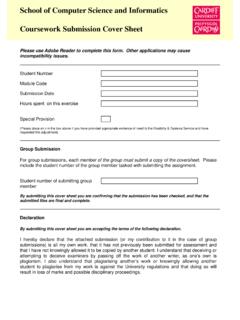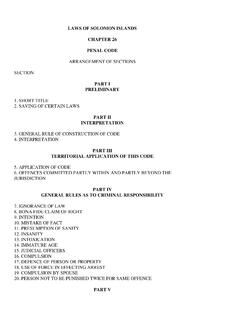Transcription of Introductionto CommunicationTheory
1 11 Introduction toCommunicationTheoryArecent advertisement for AT&T Wireless has a bold headlinethat asserts, If only communication plans were as simple ascommunicating. We respectfully disagree with their assess-ment. Mobile communication plans may indeed be intricate, but theprocess of communicating is infinitely more so. Unfortunately, much ofpopular culture tends to minimize the challenges associated with thecommunication process: We all do it, all of the time. Yet one need onlyperuse the content of talk shows, personal ads, advice columns, andorganizational performance reviews to recognize that communicationskills can make or break an individual s personal and professionallives. Companies want to hire and promote people with excellent com-munication skills. Divorces occur because spouses believe they nolonger communicate. Communication is perceived as a magical elixir,one that can ensure a happy long-term relationship and can guaranteeorganizational success. Clearly, popular culture holds paradoxicalviews about communication: It is easy to do yet powerful in its effects,simultaneously simple and reality is even more complex.
2 Good communication meansdifferent things to different people in different situations. Accordingly,simply adopting a set of particular skills is not going to guarantee success. Those who are genuinely good communicators are those whounderstand the underlying principles behind communication and areable to enact, appropriately and effectively, particular communica-tion skills as the situation warrants. This book seeks to provide thefoundation for those sorts of decisions. We focus on communicationtheories that can be applied in your personal and professional these theories including their underlying assump-tions and the predictions that they make can make you a more com-petent communicator. WHATISCOMMUNICATION?This text is concerned with communication theory, so it is important tobe clear about the termcommunication. The everyday view of commu-nication is quite different from the view of communication taken bycommunication scholars. In the business world, for example, a popularview is that communication is synonymous with information.
3 Thus,the communication process is the flow of information from one personto another (Axley, 1984). Communication is viewed as simply oneactivity among many others, such as planning, controlling, and man-aging (Deetz, 1994). It iswhatwe do in scholars, on the other hand, define communica-tion astheprocessbywhichpeopleinteractivelycr eate,sustain,andmanagemeaning(Conrad & Poole, 1998). As such, communication both reflectsthe world and simultaneously helps create it. Communication is notsimply one more thing that happens in personal and professional life;it is the very means by which we produce our personal relationshipsand professional experiences it ishowwe plan, control, manage, per-suade, understand, lead, love, and so on. All of the theories presentedin this book relate to the various ways in which human interaction isdeveloped, experienced, and understood. WHATISCOMPETENTCOMMUNICATION?Because we believe that one of the goals of studying CommunicationTheory is to make you a better communicator, we should articulate moreclearly the nature of communication competence.
4 Research indicatesthat communication competence is most often understood as achiev-ing a successful balance between effectiveness and appropriateness(Spitzberg & Cupach, 1989).Effectivenessis the extent to which youachieve your goals in an interaction. Did you get the raise? Were you able2 APPLYING COMMUNICATION THEORY FOR PROFESSIONAL LIFEto convince a subordinate that timeliness is important? Did you per-suade your spouse to clean the bathroom?Appropriatenessrefers to ful-filling social expectations for a particular situation. Did you assertivelyask for the raise, or was it a meek inquiry? Were you insistent or wishy-washy when discussing your employee s tardiness? Was your interac-tion with your spouse demonstrative or did you passive-aggressivelypile dirty towels on the floor? There are many cases in which a person iseffective without being appropriate; consider a job applicant who lies ona resume to get a job for which he or she is unqualified. That personmight be very effective in getting the job, but is such deceit appropriate?
5 On the other hand, many times people are appropriate to the point offailing to achieve their goals. For example, a person who doesn t wish totake on an additional task at work, but says nothing because he or shefears causing conflict, might be sacrificing effectiveness for appropriate-ness. The key is that when faced with communicative decisions, the com-petent communicator considers how to bebotheffective and believe that the theories described in this book will help you achieveyour communication goals by providing indication of both what shouldbe done as well as how you should do it. WHATISTHEORY?The termtheoryis often intimidating to students. We hope by the timeyou finish reading this book that you will find working with theory tobe less daunting than you might have expected. The reality is that youhave been working with theories of communication all of your life,even if they haven t been labeled as such. Theories simply provide anabstract understanding of the communication process (Miller, 2002).
6 Asan abstract understanding, they move beyond describing a single eventby providing a means by which all such events can be understood. Toillustrate, a theory of customer service can help you understand thepoor customer service you received from your cable company thismorning. Likewise, the same theory can also help you understand agood customer service encounter you had last week at a favoriterestaurant. In a professional context, the theory can assist your organi-zation in training and developing customer service their most basic level, theories provide us with a lens by whichto view the world. Think of theories as a pair of glasses. Correctivelenses allow wearers to observe more clearly, but they also impactvision in unforeseen ways. For example, they can limit the span ofwhat you see, especially when you try to look peripherally outside therange of the frames. Similarly, lenses can also distort the things you see,Chapter 1 Introduction to Communication Theory 3making objects appear larger or smaller than they really are.
7 You canalso try on lots of pairs of glasses until you finally pick one pair thatworks the best for your lifestyle. Theories operate in a similar theory can illuminate an aspect of your communication so that youunderstand the process much more clearly; theory also can hide thingsfrom your understanding or distort the relative importance of consider a communication theory to , theories can domore than summarize. Other functions of theories are to focus attentionon particular concepts, clarify our observations, predict communicationbehavior, and generate personal and social change (Littlejohn, 1999). Wedo not believe, however, that all of these functions arenecessaryfor a sys-tematic summary of communication processes to be considered a does this definition mean for people in communication, business,and other professions? It means that any time you say a communicationstrategyusuallyworks this way at your workplace, or that a specificapproach isgenerallyeffective with your boss, or that certain types of com-munication aretypicalfor particular media organizations, you are in essenceproviding a theoretical explanation.
8 Most of us make these types of sum-mary statements on a regular basis. The difference between this sort of the-orizing and the theories provided in this book centers on the termsystematicin the definition. Table presents an overview of three types of APPLYING COMMUNICATION THEORY FOR PROFESSIONAL LIFET ypeofTheoryExampleCommonsense theory Never date someone you work with it will alwaysend badly. The squeaky wheel gets the grease. The more incompetent you are, the higher you theory Audience analysis should be done prior to presentinga speech. To get a press release published, it should benewsworthy and written in journalistic theory Effects of violations of expectations depend on thereward value of the violator (expectancy violationstheory). The media do not tell us what to think but what tothink about (agenda-setting theory). ofTheoryThe first summary statements in the table describe what is knownascommonsensetheory, or theory-in-use. This type of theory is often cre-ated by an individual s own personal experiences or developed fromhelpful hints passed on from family members, friends, or theories are useful because they are often the basis forour decisions about how to communicate.
9 Sometimes, however, ourcommon sense backfires. For example, think about common knowledgeregarding deception. Most people believe that liars don t look the per-son they are deceiving in the eyes, yet research indicates that this is notthe case (DePaulo, Stone, & Lassiter, 1985). Let s face it: If we engage indeception, we will work very hard at maintaining eye contact simplybecausewe believe that liars don t make eye contact! In this case, com-monsense theory is not supported by research into the second type of theory is known asworkingtheory. These are gen-eralizations made in particular professions about the best techniques fordoing something. Journalists work using the inverted pyramid ofstory construction (most important information to least important infor-mation). Filmmakers operate using specific camera shots to evoke par-ticular emotions in the audience, so close-ups are used when afilmmaker wants the audience to place particular emphasis on the objectin the shot.
10 Giannetti (1982), for example, describes a scene inHitchcock sNotoriousin which the heroine realizes she is being poisonedby her coffee, and the audience sees this realization through a close-upof the coffee cup. Working theories are more systematic than common-sense theories because they represent agreed-on ways of doing things fora particular profession. In fact, these working theories may very well bebased on scholarly theories. However, working theories more closelyrepresent guidelines for behavior rather than systematic types of theories are typically taught in content-specific courses(such as public relations, media production, or public speaking).The type of theory we will be focusing on in this book is known asscholarlytheory. Students often assume (incorrectly!) that because atheory is labeled asscholarlythat it is not useful for people in businessand the professions. Instead, the termscholarlyindicates that the theoryhas undergone systematic research.
















